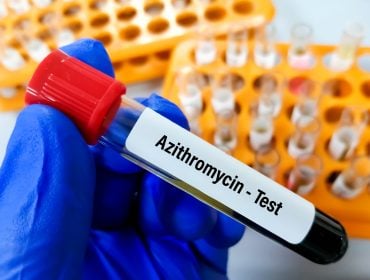Can You Get HIV From Kissing?
In other words, can HIV be transmitted through kissing?
Human Immunodeficiency Virus (HIV) is a life-altering virus that attacks the body’s immune system, specifically the CD4 cells (T cells). These help the immune system fight infections. If left untreated, HIV can lead to Acquired Immunodeficiency Syndrome (AIDS), a severe phase of the virus that leaves the body susceptible to opportunistic infections. HIV is primarily transmitted through exchanging certain bodily fluids from an infected individual, such as blood, semen, vaginal fluids, and breast milk.
Despite being widely studied and discussed, misconceptions about HIV transmission persist. One such misconception is the potential for transmission through kissing. This article addresses this specific question: Can you get HIV from kissing? Using scientific evidence and expert guidance, we will explore the realities of HIV transmission, with a particular focus on the role of saliva and the risks associated with kissing.
Can HIV Be Transmitted Through Kissing?
II. Understanding HIV Transmission
HIV transmission occurs when specific body fluids from an infected person come into contact with certain tissues of another person. The virus can be transmitted through blood, semen, vaginal fluids, rectal fluids, and breast milk1. It’s important to note that HIV can’t be transmitted through contact, such as hugging or sharing utensils, nor through air or water.
The most common ways HIV is transmitted include:
- Sexual Transmission: This is the most common way HIV is spread. The virus can be transmitted through anal or vaginal sex and, less commonly, oral sex if one partner has HIV and the other does not.
- Sharing Injection Drug Equipment: Sharing needles or syringes with someone who has HIV significantly increases the risk of transmission. In 2018, approximately 7% of all new HIV diagnoses in the United States were caused by injection drug use.
- Mother-to-Child Transmission: HIV can also be passed from mother to child during pregnancy, childbirth, or breastfeeding. Without treatment, the risk of transmitting HIV from mother to child is between 15% and 45%. However, antiretroviral treatment and other preventative measures can reduce this risk to below 5%.
The role of body fluids in HIV transmission is crucial. HIV must be present in sufficient quantity in these fluids to cause infection. The virus is present in the highest quantity in blood, followed by semen, vaginal fluids, and breast milk. Different activities expose individuals to various body fluids and, thus, carry different levels of risk for transmitting HIV.

III. The Role of Saliva in HIV Transmission
Scientific research has made significant strides in understanding the role of saliva in HIV transmission. It’s essential to note that while HIV can be detected in saliva, it’s often found in much lower concentrations than in other body fluids such as blood.
Moreover, saliva has unique properties that tend to inhibit HIV, reducing its potential for infection. Studies have shown that saliva contains components like secretory leukocyte protease inhibitor (SLPI) and other antimicrobial proteins that can decrease HIV-1 infectivity.
The presence of these salivary components is one of the reasons why HIV transmission through saliva is considered infrequent. While there are instances of viable HIV being isolated from oral fluids, the inactivation of the virus by salivary components significantly reduces the likelihood of HIV transmission through this route.
Even when HIV is present in the oral cavity, factors such as fewer CD4+ target cells, the presence of IgA antibodies, and the endogenous antiviral factors found in saliva further reduce the risk of oral transmission.
IV. Risks Associated with Kissing
Kissing, particularly deep or “French” kissing, is often seen as a relatively safe form of intimacy. However, it is not without its potential risks. While HIV is not typically transmitted through saliva, certain conditions might increase the risk.
Deep kissing can sometimes lead to minor cuts or sores in the mouth, which, if present in both individuals, could potentially allow for the exchange of blood. Blood, unlike saliva, can carry a significant amount of the virus and thus can be a medium for HIV transmission. However, it’s important to note that such cases are extremely rare. The CDC states that contact between broken skin, wounds, or mucous membranes and HIV-infected blood or blood-contaminated body fluids can potentially transmit the virus.
In addition to HIV, other infections can be transmitted through kissing. These include but are not limited to herpes simplex virus, cytomegalovirus (CMV), and certain oral warts. Dental plaque and cavities can also be exposed to your partner during a kiss, potentially leading to dental health issues.
While the possibility exists, the risk of transmitting HIV through kissing is incredibly low. This should not dissuade individuals from getting tested regularly and knowing their status, as these are still crucial steps in preventing the spread of HIV.
V. Prevention and Safety Measures
Preventing HIV transmission is a shared responsibility involving making informed health decisions. There are several effective strategies to prevent the spread of HIV, with regular testing and knowing your status being of paramount importance.
Regular HIV Testing and Knowing Your Status
Knowing your HIV status is crucial in controlling the spread of the virus. Regular testing allows for early detection, which significantly improves the effectiveness of treatment and lowers the likelihood of transmitting the virus to others. The Centers for Disease Control and Prevention (CDC) suggests that all people between the ages of 13 – 64 be tested for HIV annually as part of an annual exam.
Safe Practices: Using Condoms and Pre-exposure Prophylaxis (PrEP)
Practicing safe sex is another essential measure in preventing HIV transmission. This includes using condoms correctly and consistently during every sexual encounter. Condoms serve as a physical barrier, preventing HIV transmission by reducing the risk of exposure to semen, vaginal fluids, or blood.
In addition to condom use, pre-exposure prophylaxis (PrEP) is a highly effective strategy for individuals at high risk of acquiring HIV. PrEP involves taking a daily medication that can reduce the risk of contracting HIV from sex by about 99% when taken consistently.
Remember, the key to prevention is education. Understanding how HIV is transmitted, knowing your status, and adopting safe practices can significantly reduce the risk of HIV transmission.

HIV From Kissing
VI. Conclusion: Can HIV Be Transmitted Through Kissing?
Throughout this discussion, we’ve explored the mechanisms of HIV transmission, the role of body fluids in the process, and the unique case of saliva’s inhibitory role. We’ve learned that HIV is primarily transmitted through sexual contact, sharing injection drug equipment, and mother-to-child transmission. Saliva, while it can contain traces of the virus, typically inhibits HIV and significantly reduces its infectivity due to the presence of certain proteins and antibodies. So, can you get HIV from kissing?
When it comes to kissing, the risk of HIV transmission is incredibly low. While deep kissing can potentially lead to contact with blood if both individuals have cuts or sores in their mouths, such instances are extremely rare. Other infections like herpes simplex virus and cytomegalovirus (CMV) can be transmitted through kissing, but they are unrelated to HIV.
So, to answer the central question: Can you get HIV from kissing? The risk is extremely low to the point of being negligible. However, it’s always essential to maintain good oral hygiene, avoid kissing when you have open sores or gum disease, and, most importantly, know your and your partner’s HIV status. Regular testing and safe practices are crucial in controlling the spread of HIV. We have a similar article called Chlamydia from kissing. So, can hiv be transmitted through kissing?…probably not.
Secure and Confidential
STD testing services
The fastest results possbile - available in 1 to 2 days

Tagged
Categorized As
Author: STD Check Editorial Team
At STDCheck.com, we go to great lengths to ensure quality content. We’re using our own collection of data. It is not bought or made up for “click-bait” purposes. We don’t entice traffic with cheesy graphics or raunchy headlines. Our information is to promote STD testing, educate people, let go of social stigmas, and bring awareness. We also provide a completely confidential atmosphere through private testing. When we produce an article, it is fact-based. We check it with medical advisors that approve it. Our staff consists of doctors and other medical professionals who peer review the content we make available on STDCheck.com. From all over the world, we have sourced the best and the brightest content developers, including medical professionals, marketing engineers, data scientists, content specialists, and media relations.




